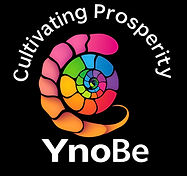Smart Cash Flow Management Strategies for Success
- Esz Connor
- Oct 6
- 4 min read
Managing finances effectively is essential for the sustainability and growth of any small business or individual financial plan. One of the most critical aspects of financial health is maintaining a steady and predictable cash flow. This article explores practical strategies and effective cash flow tips that can help ensure financial stability and success.
Understanding the Importance of Cash Flow
Cash flow refers to the movement of money into and out of a business or personal account. Positive cash flow means more money is coming in than going out, which is vital for meeting obligations such as payroll, bills, and investments. Negative cash flow, on the other hand, can lead to financial difficulties and even insolvency.
To maintain a healthy cash flow, it is important to monitor income and expenses regularly. This involves tracking all sources of revenue and all outgoing payments. By doing so, it becomes easier to anticipate periods of surplus or shortage and plan accordingly.
For example, a small retail business might experience seasonal fluctuations in sales. By analyzing past cash flow patterns, the business can prepare for slower months by reducing expenses or securing short-term financing.

Effective Cash Flow Tips for Small Businesses and Individuals
Implementing effective cash flow tips can significantly improve financial management. The following recommendations provide actionable steps to enhance cash flow stability:
Create a Cash Flow Forecast
Develop a detailed forecast that projects income and expenses over the next 3 to 12 months. This forecast should be updated regularly to reflect actual performance and changing conditions.
Invoice Promptly and Clearly
Ensure that invoices are sent immediately after goods or services are delivered. Clear payment terms and follow-up reminders can reduce delays in receiving payments.
Manage Inventory Efficiently
Avoid overstocking by aligning inventory purchases with sales forecasts. Excess inventory ties up cash that could be used elsewhere.
Negotiate Payment Terms
Where possible, negotiate longer payment terms with suppliers and shorter terms with customers. This can improve cash availability.
Control Expenses
Regularly review expenses to identify non-essential costs that can be reduced or eliminated. Implementing cost-saving measures can free up cash.
Maintain a Cash Reserve
Establish a reserve fund to cover unexpected expenses or periods of low income. This provides a financial buffer and reduces reliance on credit.
Use Technology for Tracking
Utilize accounting software or financial management tools to automate tracking and reporting. This increases accuracy and saves time.
By applying these tips, businesses and individuals can create a more predictable and manageable cash flow environment.

What is the Difference Between Cash Flow Management and Cash Management?
Understanding the distinction between cash flow management and cash management is important for effective financial planning.
Cash Flow Management focuses on monitoring and optimizing the timing and amounts of cash inflows and outflows. It involves forecasting, budgeting, and ensuring that sufficient cash is available to meet obligations.
Cash Management is a broader term that includes the handling of cash on hand, banking activities, and short-term investments. It encompasses the processes of collecting, disbursing, and investing cash to maximize liquidity and minimize risk.
In practice, cash flow management is a subset of cash management. While cash management deals with the physical and electronic handling of cash, cash flow management emphasizes planning and controlling the movement of cash over time.
For example, a business may use cash management techniques to deposit daily receipts and manage bank accounts, while cash flow management would involve forecasting when payments to suppliers are due and ensuring funds are available.

Practical Steps to Improve Cash Flow
Several practical steps can be taken to improve cash flow beyond forecasting and expense control:
Implement Early Payment Incentives
Offer discounts to customers who pay invoices early. This encourages faster payment and improves cash inflows.
Use Factoring or Invoice Financing
Selling accounts receivable to a third party can provide immediate cash, though it may involve fees.
Review Pricing Strategies
Ensure that prices cover costs and provide adequate margins. Adjust pricing if necessary to improve profitability.
Automate Payments and Collections
Automating recurring payments and collections reduces delays and errors.
Regularly Review Credit Policies
Assess the creditworthiness of customers and adjust credit terms to minimize bad debts.
Seek Professional Advice
Consulting with financial advisors or accountants can provide tailored strategies and insights.
These steps, when combined with ongoing monitoring, contribute to a robust financial position.
Encouragement for Ongoing Financial Discipline
Maintaining effective cash flow requires consistent attention and discipline. By adopting the strategies outlined, it is possible to create a stable financial foundation that supports growth and resilience.
It is advisable to revisit financial plans regularly and adjust them as circumstances change. Staying informed about financial best practices and leveraging available tools can further enhance management efforts.
For those seeking additional guidance, resources such as cash flow management articles and professional services can provide valuable support.
The journey toward financial success is continuous, and with careful planning and execution, it can be achieved with confidence.
Thank you for considering these strategies. May your financial endeavors be met with steady progress and lasting stability.





Comments